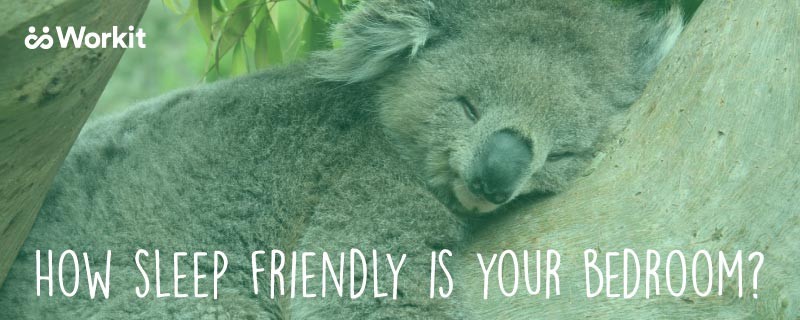How to Create a Sleep Friendly Bedroom
Ahhhhh, quality sleep! Who doesn’t love it? It’s healthy, it feels great, and humans are born naturally awesome at it. But sometimes addictive behaviors can sabotage our sleep by getting us stuck in wonky sleep cycles.
Here’s what that looks like: we use addictive behaviors (like drinking or drugs) to help us fall asleep. Said addictive behaviors disrupt our sleep quality by messing with important sleep stages, increasing the prevalence of preexisting sleep issues, and/or enhancing other health problems like breathing disorders.
That leaves us tired the next day, which some of us cope with by using more addictive behaviors like caffeine! Yikes. The good news? There are ways to break out of the cycle! You can fall asleep and stay asleep naturally. That’s what we’re here for!
To start really sleeping better, the first step is taking a good hard look at your sleeping environment and making sure it’s up to par to send you rocketing to dreamland.
Here’s a quick quiz to see how your bedroom stacks up now:
Take the Quiz
Got your score? Wonderful. Now let’s run through a few basics of having a sleep-friendly bedroom:
Invest in a dream-worthy sleep space.
It’s important to feel relaxed and peaceful in your sleeping environment. What feels calming aesthetically will differ from person to person, but in general choose muted tones and pleasant imagery (this is probably not the place to display your creepy doll collection or politically charged vision boards, for example). Keep your bedroom designated for sleep, and sleep only. No work in the bedroom! And do your best to leave devices outside or put them in airplane mood so they won’t interrupt your sleep with notifications.
Embrace your cold, dark side.
Insufficient darkness is often a culprit for frequent and prolonged awakenings, so do your best to dim things down completely. If you need a light to use the bathroom or other reasons, try a nightlight. If you find you can’t block out sources of light well enough, experiment with a sleep mask (sometimes it can take a few tries to get used to).
Mind the 3 Ms of noise control.
Even if you’re not conscious of it, sound can throw off your sleep quality. Keep things hush-hush with these 3 tricks: mask, maintain, and muffle.
- Masking sound with white noise reduces differences between background noises to make it less interruptive. You can use old-fashioned sources of white noise like fans, or find an app for that.
- Maintaining as consistent noise as possible is also important, because often the unpredictability of sound is more irritating to our sleep than the actual sound. For example, mellow instrumental music will often have more consistent volume and tone than the TV will.
- Finally, muffle sounds to keep them from hitting your precious ear drums in the first place! Close windows and doors, and try out earplugs—there are more styles out there than you might expect, so experiment to find the best fit.
Be wary of allergies.
Finding yourself sniffling, sneezing, or wheezing after hitting the hay? Do an allergy audit of your bedroom. Outdoor air can bring in seasonal allergens like pollen. Carpets, beddings, mattresses, and pillows can hold irritating dust, dust mites, pet dander, mold, and other allergens. No good. Fortunately, once you identify an allergen problem, there are usually simple solutions such as using air purifiers, changing filters, washing linens, and vacuuming.
Sleep and relaxation are a huge deal for overall health, and for kicking addictive behaviors. At Workit Health, we’ve got a lot of intel from experts, plus firsthand experience on how to unwind, fall asleep, and stay asleep, without drugs, alcohol, and other addictive behaviors. Check back often for more tips or get started with us below.
Sweet dreams!









